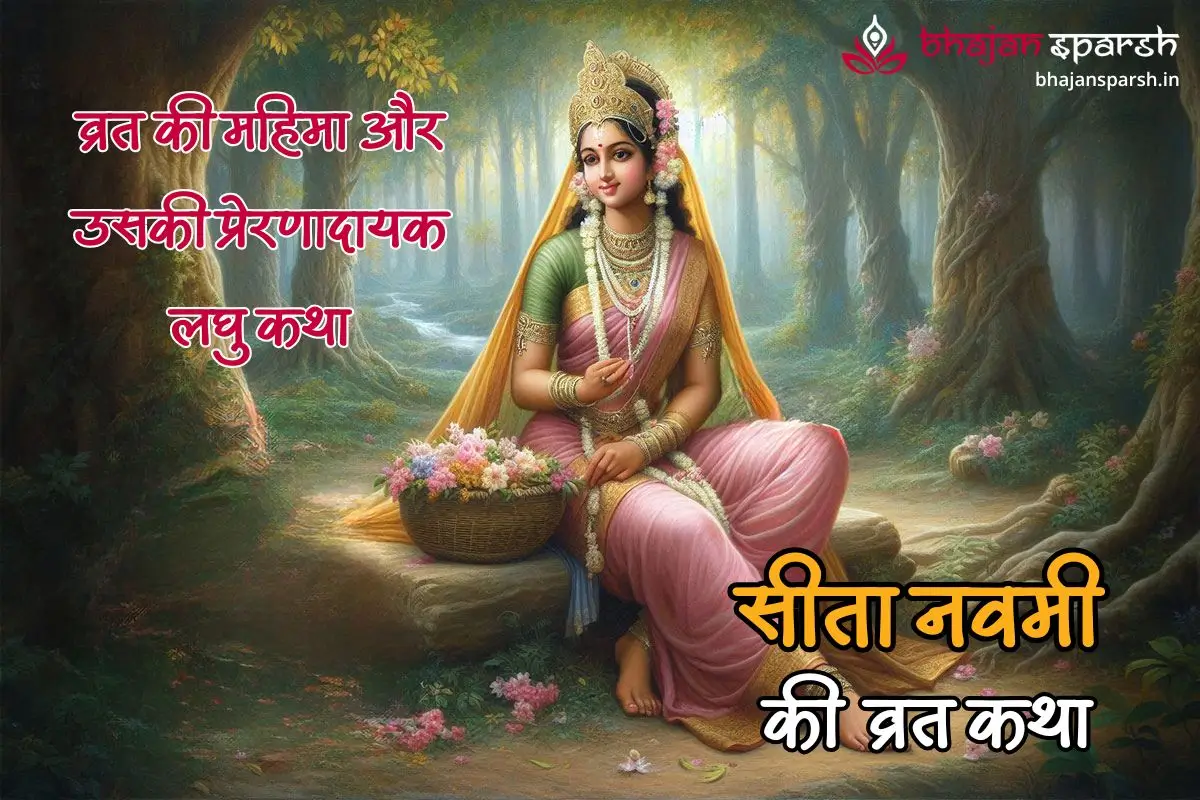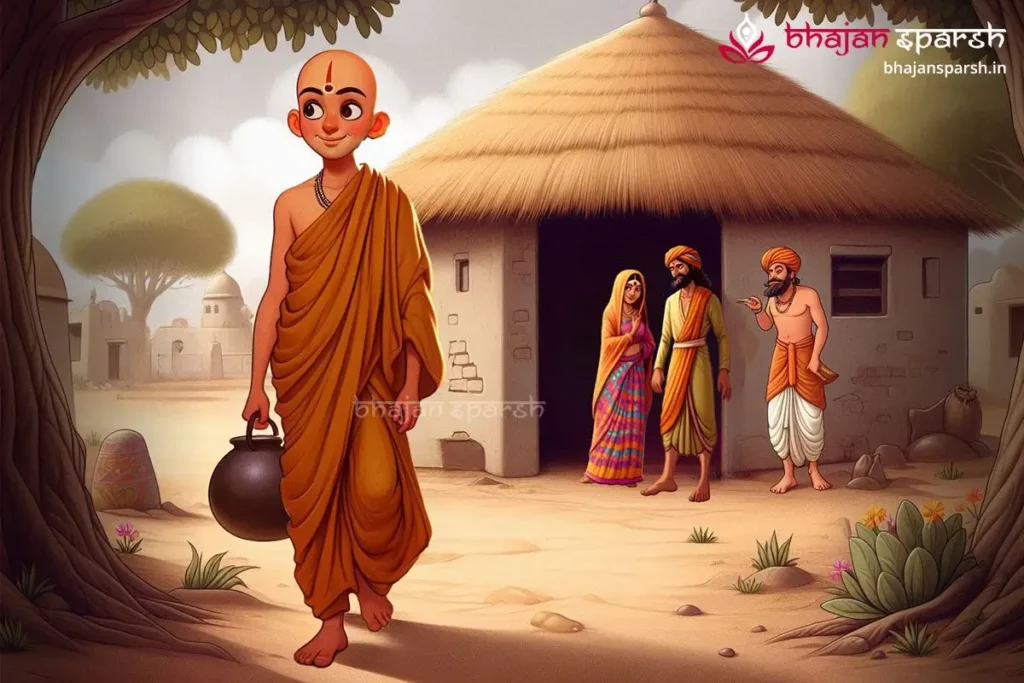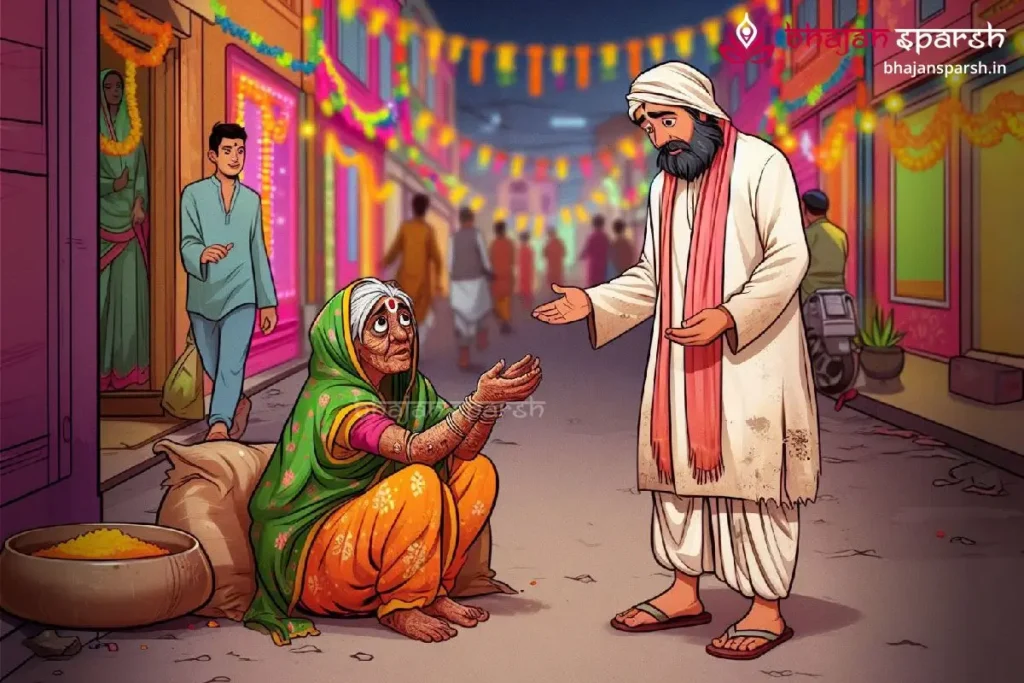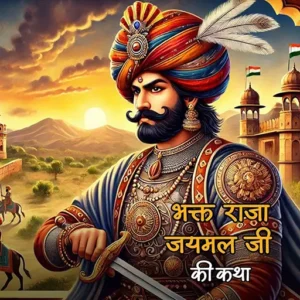
Sita Navami is a significant festival celebrated to mark the birth of Goddess Sita, who is considered an incarnation of Goddess Lakshmi. This sacred occasion is observed every year on the ninth day (Navami) of the waxing phase of the moon (Shukla Paksha) in the Hindu month of Vaishakh.
According to the Ramayana, when King Seeradhwaj Janaka of Mithila was preparing the land for a yajna (sacred ritual) in the hope of attaining a child, he himself took up the plough to till the field. As he ploughed the land, the tip of the plough struck a spot in the earth and got stuck. Upon digging that spot, a divine clay vessel was found, inside which lay a baby girl — she was none other than Goddess Sita.
Because she emerged from the earth, she is also called “Bhoomiputri” (Daughter of the Earth). Interestingly, the tip of the plough is also called Sita in Sanskrit, which inspired her name. King Janaka and Queen Sunayana lovingly accepted her as their daughter.
To this day, Punaura Dham, located in Bihar’s Sitamarhi district, is worshipped as the birthplace of Sita. This site holds not only historical significance but also deep spiritual importance, as thousands of devotees gather here every year on Sita Navami.
According to sacred scriptures, observing a fast on this day and performing rituals to honor Lord Rama and Goddess Sita brings the merit of sixteen great donations (Mahadaan). It is believed to bestow happiness, good fortune, harmony, and self-restraint in one’s life.
Goddess Sita is regarded as the embodiment of womanhood. She is not only the consort of Lord Rama but also the ideal wife, ideal mother, and a timeless symbol of feminine virtue. Sita Navami is not just a religious date — it is a day to remember the eternal story of strength, patience, and compassion that Goddess Sita represents.
सीता नवमी: व्रत की महिमा और उसकी प्रेरणादायक लघु कथा
सीता नवमी कब और क्यों मनाई जाती है?
सीता नवमी, जिसे जानकी नवमी या सीता जयंती के नाम से भी जाना जाता है, हिंदू धर्म में वैशाख मास के शुक्ल पक्ष की नवमी तिथि को मनाया जाने वाला प्रमुख त्योहार है, क्योंकि मान्यता है कि इसी दिन माता सीता का पृथ्वी पर दिव्य प्राकट्य हुआ था।

सीता नवमी की व्रत कथा
बहुत समय पहले, राजस्थान के मारवाड़ क्षेत्र में देवदत्त नाम के एक ब्राह्मण अपने छोटे-से घर में अपनी पत्नी शोभना के साथ रहते थे। देवदत्त एक धार्मिक और विद्वान पुरुष थे — वेदों का गहन ज्ञान रखते थे और साधु-स्वभाव के थे। अपने घर का खर्च चलाने के लिए वे गांव-गांव जाकर भिक्षा मांगते थे।
देवदत्त की अनुपस्थिति में, शोभना कुसंगति में पड़ गई और परपुरुषों के साथ व्यभिचार में लिप्त हो गई। जैसे-जैसे समय बीता, पूरे गांव को उसके दुष्कर्मों की जानकारी हो गई। अपने ही पति के साथ विश्वासघात करने के कारण गांववासियों ने उसकी तीव्र निंदा की। यह सब सुनकर शोभना अत्यंत क्रोधित हो उठी और प्रतिशोध की भावना से उसने पूरे गांव में आग लगा दी। दुर्भाग्यवश, वह स्वयं भी उस आग की चपेट में आ गई और उसकी वहीं मृत्यु हो गई।
अपने पापों के फलस्वरूप, अगले जन्म में शोभना का जन्म एक चांडाल परिवार में हुआ और वह चांडालिनी कहलाने लगी। पिछले जन्म के पापों की सजा स्वरूप उसे घोर गरीबी, कुष्ठ रोग और अंधत्व जैसे कष्ट झेलने पड़े। भोजन की तलाश में वह एक नगर से दूसरे नगर तक भटकती रही।

एक दिन वह भोजन की खोज में कौशलपुरी पहुंची, जहां संयोगवश उस दिन सीता नवमी का पर्व मनाया जा रहा था। नगरवासी व्रत और पूजन में लीन थे। भूख से व्याकुल और पीड़ाओं से जर्जर उस स्त्री ने लोगों से करुण स्वर में भोजन की याचना की।
वह बोली, “हे सज्जनों, मुझ पर दया करो, कुछ भोजन दे दो। मैं भूख से मर रही हूं।” इस पर एक व्यक्ति ने उत्तर दिया, “देवी, आज सीता नवमी है। इस दिन अन्न का दान वर्जित है। कल व्रत का पारण होगा, तब प्रसाद मिलेगा।”
परंतु चांडालिनी तो पीड़ा से बेहाल थी और ज़ोर-ज़ोर से भोजन की गुहार लगाने लगी। अंततः एक श्रद्धालु ने उसे तुलसी पत्र और जल प्रदान किया। वही लेकर वह वहां से आगे बढ़ गई। कुछ ही दूर जाने पर उसकी मृत्यु हो गई, परंतु अज्ञानवश भी वह सीता नवमी का व्रत पूर्ण कर चुकी थी।
इस अनजाने व्रत के प्रभाव से देवी सीता प्रसन्न हुईं और उसे उसके समस्त पापों से मुक्त कर दिया। सीता माता की कृपा से उसे स्वर्ग की प्राप्ति हुई, जहां उसने अनेक वर्षों तक आनंदपूर्वक समय व्यतीत किया।
पुनर्जन्म में वह कामरूप देश के महाराजा जयसिंह की महारानी कामकला के रूप में जन्मी। व्रत की शक्ति से उसे अपने पूर्व जन्मों की स्मृति बनी रही। इस स्मरण के प्रभाव से महारानी कामकला ने अपने राज्य में अनेक देवालयों का निर्माण कराया, जिनमें जानकी और रघुनाथ की मूर्तियों की प्रतिष्ठा की गई।
अपने शेष जीवन को उन्होंने प्रभु श्रीराम और माता सीता की सेवा में समर्पित कर दिया और इस प्रकार अपने जीवन को धन्य बनाया।
सीता नवमी व्रत की महिमा
मान्यता है कि सीता नवमी के दिन विधिपूर्वक व्रत और पूजन करने से व्यक्ति को पृथ्वी दान, सोलह महान दानों और समस्त तीर्थों के दर्शन के बराबर फल प्राप्त होता है। विवाहित महिलाएं इस दिन व्रत रखकर अपने पति की लंबी आयु और वैवाहिक सुख की कामना करती हैं।
When and Why is Sita Navami Celebrated?
Sita Navami, also known as Janaki Navami or Sita Jayanti, is a major Hindu festival celebrated on the ninth day (Navami Tithi) of the Shukla Paksha (waxing phase of the moon) in the month of Vaishakha. It is believed that on this day, Goddess Sita made her divine appearance on Earth.

The Vrat Katha (Story of the Vow) of Sita Navami
Long ago, in the Marwar region of Rajasthan, there lived a Brahmin named Devadatta, who resided in a small house with his wife Shobhana. Devadatta was a religious and learned man—well-versed in the Vedas and saintly in nature. To make ends meet, he would go from village to village seeking alms.
In his absence, Shobhana fell into bad company and became involved in immoral relationships with other men. Over time, the entire village came to know of her misdeeds. The villagers condemned her harshly for betraying her own husband. Enraged and consumed by revenge, Shobhana set the entire village on fire. Tragically, she too perished in the flames.
As a result of her sins, in her next birth, Shobhana was born into a family of outcasts (Chandal) and came to be known as a Chandalini. She suffered greatly in this life—facing extreme poverty, leprosy, and blindness as punishment for her past karma. She wandered from town to town in search of food.

One day, during her search for food, she arrived in Kaushalpuri. By coincidence, it was the day of Sita Navami, and the townspeople were engrossed in fasting and worship. Weakened by hunger and suffering, she pleaded with the people for food in a pitiful voice.
She said, “O kind people, have mercy on me. Please give me something to eat. I am dying of hunger.” One person replied, “Devi, today is Sita Navami. It is forbidden to give food on this day. Tomorrow, after the fast is broken, prasad will be distributed.”
But the Chandalini, overwhelmed by pain and hunger, kept crying out for food. Finally, a compassionate devotee offered her a Tulsi leaf and some water. She took it and moved on. Not far from there, she passed away. Unknowingly, she had completed the fast of Sita Navami.
Due to the merit of observing the fast—even unknowingly—Goddess Sita was pleased and absolved her of all her sins. By the grace of Sita Mata, she attained heaven, where she lived in joy for many years.
In her next birth, she was born as Queen Kamakala, the consort of King Jayasinha of the kingdom of Kamarupa. The power of the vow granted her the memory of her past lives. Influenced by this remembrance, Queen Kamakala built many temples in her kingdom and installed idols of Janaki and Raghunath.
She dedicated the rest of her life in the service of Lord Rama and Goddess Sita, thus making her life truly blessed.
The Significance of the Sita Navami Fast
It is believed that observing the Sita Navami fast and performing rituals with devotion on this day grants a person the merit equivalent to donating the Earth, offering sixteen great charities, and visiting all the holy pilgrimages. Married women observe this fast to pray for their husband’s long life and marital bliss.
સીતા નવમી ક્યારે અને કેમ ઉજવવામાં આવે છે?
સીતા નવમી, જેને જાનકી નવમી અથવા સીતાજી જયંતિ તરીકે પણ ઓળખવામાં આવે છે, હિંદુ ધર્મમાં વૈશાખ મહિનાના શુક્લ પક્ષની નવમી તિથિએ ઉજવાતો મહત્વપૂર્ણ તહેવાર છે. માન્યતા મુજબ, આ દિવસે માતા સીતાનું ધરતી પર દિવ્ય અવતરણ થયું હતું.

સીતા નવમીની વ્રત કથા
ઘણા સમય પહેલા, રાજસ્થાનના મારવાડ પ્રદેશમાં દેવદત્ત નામના એક બ્રાહ્મણ તેમની પત્ની શોભના સાથે એક નાનકડા ઘરમાં રહેતા હતા. દેવદત્ત ધાર્મિક અને વિદ્વાન વ્યક્તિ હતા — તેઓને વેદોનું ઊંડું જ્ઞાન હતું અને તેઓ સાધુ-સ્વભાવ ધરાવતા હતા. પોતાનું ઘર ચલાવવા માટે તેઓ ગામેગામ ભિક્ષા માગતા ફરતા.
દેવદત્તની ગેરહાજરીમાં શોભના ખરાબ સંગતમાં પડી ગઈ અને પરપુરૂષો સાથે દૂષિત સંબંધોમાં લિપ્ત થઈ ગઈ. સમય જતાં સમગ્ર ગામને તેની કુકર્મોની ખબર પડી ગઈ. પોતાના પતિ સાથે દગો કરવાના કારણે ગામલોકોએ તેની ભારે નિંદા કરી. આ બધું સાંભળી શોભના અત્યંત ગુસ્સે ભરાઈ ગઈ અને બદલો લેવા માટે તેણે સમગ્ર ગામમાં આગ લગાવી દીધી. દુર્ભાગ્યે, તે પોતે પણ એ આગમાં સળગી ગઈ અને તેનું મૃત્યુ થયું.
પાછલા જન્મના પાપોના પરિણામે તે આગલા જન્મમાં ચાંડાલ પરિવારમાં જન્મી અને ચાંડાલિની તરીકે ઓળખાયેલી. તેને ગંભીર ગરીબી, કોષ્ટરોગ અને અંધત્વ જેવી ભયાનક યાતનાઓ ભોગવવી પડી. ભોજનની શોધમાં તે એક શહેરથી બીજું શહેર ભટકતી રહી.

એક દિવસ તે ભટકતી-ભટકતી કૌશલપુરી પહોંચી, જ્યાં તે દિવસે સીતા નવમીની ઉજવણી ચાલી રહી હતી. નાગરિકો ઉપવાસ અને પૂજનમાં મગ્ન હતા. ભૂખી અને દુ:ખથી પરેશાન સ્ત્રીએ લોકોથી ભોજન માટે કરુણ અવાજમાં વિનંતી કરી.
તેણે કહ્યું, “હે સજ્જનો, મારા પર દયા કરો, થોડીક ભોજન આપો. હું ભૂખથી મરી રહી છું.” ત્યારે એક વ્યક્તિએ ઉત્તર આપ્યો, “દેવી, આજે સીતા નવમી છે. આ દિવસે અન્નદાન મનાઈ છે. કાલે વ્રતનું પારણું થશે, ત્યારે પ્રસાદ મળશે.”
પરંતુ ચાંડાલિની ખૂબ પીડામાં હતી અને ખોરાક માટે જોર જોરથી રડવા લાગી. અંતે, એક ભક્તિપૂર્વક ભક્તિભાવ ધરાવતાં વ્યક્તિએ તેને તુલસીપત્ર અને થોડું જળ આપ્યું. તે લઈને, તે આગળ ચાલી ગઈ. થોડું દૂર જતા તેનું મૃત્યુ થયું. પણ અજાણતામાં પણ તેણે સીતા નવમીનું વ્રત પૂર્ણ કર્યું હતું.
આ અજાણ્યા વ્રતના પરિણામે માતા સીતા પ્રસન્ન થયા અને તેમને તેમના બધા પાપોથી મુક્ત કરી દીધા. માતાજીની કૃપાથી તેમને સ્વર્ગની પ્રાપ્તિ થઈ અને તેણે ઘણા વર્ષો સુધી આનંદપૂર્વક જીવન વિતાવ્યું.
પછીના જન્મમાં તે કામરૂપ દેશમાં મહારાજ જયસિંહની રાણી કામકલા તરીકે જન્મી. વ્રતના પુણ્યફળના કારણે તેને તેના પૂર્વજન્મોની યાદ રહી. આ સ્મૃતિના પ્રભાવથી રાણી કામકલાએ પોતાના રાજ્યમાં અનેક મંદિરોનું નિર્માણ કરાવ્યું અને તેમાં જાનકી તથા રઘુનાથજીની પ્રતિમાઓની સ્થાપના કરાવી.
તેમણે પોતાનું સમગ્ર જીવન ભગવાન શ્રીરામ અને માતા સીતાની સેવામાં સમર્પિત કરી દીધું અને પોતાનું જીવન ધન્ય બનાવી દીધું.
સીતા નવમી વ્રતની મહિમા
માન્યતા છે કે સીતાનવમીના દિવસે વિધિપૂર્વક વ્રત અને પૂજન કરવાથી વ્યક્તિને પૃથ્વીદાન, સોળ મહાદાન અને બધા તીર્થના દર્શન બરાબર ફળ મળે છે. પરિણીત સ્ત્રીઓ આ દિવસે વ્રત રાખી પોતાના પતિના દીર્ઘાયુ અને વૈવાહિક સુખ માટે પ્રાર્થના કરે છે.




